Ensure safety and precision in hazardous areas with our selection of IECEx certified pressure transmitters. These certified instruments are engineered to mitigate ignition risks, making them ideal for applications in environments where flammable gases are present, such as petrochemical plants and natural gas pipelines.
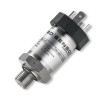 DMK457 Marine Approved Pressure Transmitter - Marine approved pressure transmitter with 4-20mA current loop output for shipbuilding with optional CuNiFe housing for sea-water compatibility
DMK457 Marine Approved Pressure Transmitter - Marine approved pressure transmitter with 4-20mA current loop output for shipbuilding with optional CuNiFe housing for sea-water compatibility DMP331P Hygienic Flush Pressure Transmitter - Sanitary pressure sensor wth exposed diaphragm with no crevices for high temperatures up to 300 Degrees Celsius in ranges from 100mb up to 40 bar gauge or absolute
DMP331P Hygienic Flush Pressure Transmitter - Sanitary pressure sensor wth exposed diaphragm with no crevices for high temperatures up to 300 Degrees Celsius in ranges from 100mb up to 40 bar gauge or absolute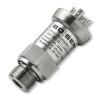 DMP331 Precision Pressure Transmitter - Stainless steel pressure transmitter with ranges from 100mbar up to 40 bar gauge or absolute. Special options for ATEX , SIL2 and compound ranges.
DMP331 Precision Pressure Transmitter - Stainless steel pressure transmitter with ranges from 100mbar up to 40 bar gauge or absolute. Special options for ATEX , SIL2 and compound ranges. DMP 335 All Welded Stainless Steel Diaphragm Pressure Sensor - All welded stainless steel diaphragm pressure sensor for mobile hydraulics, refrigeration or oxygen applications. This pressure sensor is available in the ranges from 6 bar up to 600 bar gauge with a 4-20mA or 0-10Vdc output signal.
DMP 335 All Welded Stainless Steel Diaphragm Pressure Sensor - All welded stainless steel diaphragm pressure sensor for mobile hydraulics, refrigeration or oxygen applications. This pressure sensor is available in the ranges from 6 bar up to 600 bar gauge with a 4-20mA or 0-10Vdc output signal.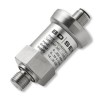 DMP343 Low Range Pneumatic Pressure Sensor - DMP343 pneumatic pressure sensor for measuring very low range pressures on pneumatic control systems, heating, ventilation and air conditioning systems (HVAC) .
DMP343 Low Range Pneumatic Pressure Sensor - DMP343 pneumatic pressure sensor for measuring very low range pressures on pneumatic control systems, heating, ventilation and air conditioning systems (HVAC) .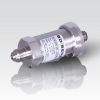 DMP 336 Hydrogen (H2) Gas Compatible Pressure Transmitter - All stainless steel 316L welded wetted parts pressure transmitter for measuring hydrogen gas
DMP 336 Hydrogen (H2) Gas Compatible Pressure Transmitter - All stainless steel 316L welded wetted parts pressure transmitter for measuring hydrogen gas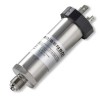 DMP331i High Accuracy Pressure Transmitter - High precision pressure transmitter with an accuracy of 0.1%FS BSL NLHR and digitally adjustable pressure ranges from 400mb up to 40 bar gauge & absolute.
DMP331i High Accuracy Pressure Transmitter - High precision pressure transmitter with an accuracy of 0.1%FS BSL NLHR and digitally adjustable pressure ranges from 400mb up to 40 bar gauge & absolute.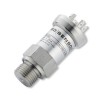 DMP333 High Range Precision Pressure Transmitter - The DMP 333 is a stainless steel 316L wetted parts pressure sensor for high pressure ranges on applications such as hydraulic test benches, presses, and hydraulic actuation.
DMP333 High Range Precision Pressure Transmitter - The DMP 333 is a stainless steel 316L wetted parts pressure sensor for high pressure ranges on applications such as hydraulic test benches, presses, and hydraulic actuation. LMK 487 Submersible Ballast Tank and Draught Level Pressure Transmitter - A 22mm diameter titanium body seawater depth and level probe with a 4-20mA output with Lloyds and DNV-GL ship approval, for monitoring the quantity of ballast or the draft of a ship’s hull.
LMK 487 Submersible Ballast Tank and Draught Level Pressure Transmitter - A 22mm diameter titanium body seawater depth and level probe with a 4-20mA output with Lloyds and DNV-GL ship approval, for monitoring the quantity of ballast or the draft of a ship’s hull. DMP457 Marine Approved Pressure Transmitter - Marine approved stainless steel diaphragm pressure transmitter with 4-20mA current loop output for shipbuilding in ranges from 100mb to 600 bar gauge or absolute.
DMP457 Marine Approved Pressure Transmitter - Marine approved stainless steel diaphragm pressure transmitter with 4-20mA current loop output for shipbuilding in ranges from 100mb to 600 bar gauge or absolute. DMP333i Rangeable High Pressure Precision Transducer - High performance transducer with adjustable scaling for modifying the pressure range for different applications. Ranges from 0-60 bar up to 0-600 bar.
DMP333i Rangeable High Pressure Precision Transducer - High performance transducer with adjustable scaling for modifying the pressure range for different applications. Ranges from 0-60 bar up to 0-600 bar.
Find out more about IECEx Certified Pressure Transmitters to determine which product options and capabilities will best meet your application requirements.
Pressure transmitters are essential tools for monitoring and controlling industrial processes, however, in environments with the presence of flammable gases, the stakes are raised. Traditional pressure transmitters can become potential ignition sources, posing a severe risk to personnel and infrastructure. This is where IECEx certified pressure transmitters play a pivotal role.
IECEx, or the International Electrotechnical Commission System for Certification to Standards Relating to Equipment for Use in Explosive Atmospheres, is a globally recognized certification scheme that assures the safety of electrical and electronic equipment intended for use in explosive atmospheres. When selecting a pressure transmitter for hazardous areas, the IECEx certification mark signifies that the device has been rigorously tested and evaluated to meet stringent safety standards.
These specialized pressure transmitters are designed with specific safety features to prevent the generation of sparks or excessive heat that could ignite flammable gases. They employ various protection methods, such as intrinsic safety, flameproof enclosures, or encapsulation, to ensure that they remain safe even in the presence of explosive atmospheres.
Applications
The applications for IECEx certified pressure transmitters span a variety of industries where the risk of flammable gases is ever-present:
- Petrochemical refineries: These sprawling complexes process vast quantities of flammable hydrocarbons, making them particularly susceptible to fire and explosion hazards. IECEx certified pressure transmitters are indispensable for monitoring critical parameters such as pressure, flow, and level in various process units.
- Natural gas distribution pipelines: These pipelines crisscross vast distances, transporting natural gas to homes and businesses. Any leak or malfunction could have catastrophic consequences. IECEx certified pressure transmitters ensure that the pressure within the pipeline remains within safe limits.
- Chemical plants: Chemical manufacturing often involves handling and processing flammable substances. IECEx certified pressure transmitters are used throughout the plant to maintain a safe and controlled environment.
- Oil and gas production platforms: Offshore platforms operate in harsh conditions, including the presence of flammable gases. IECEx certified pressure transmitters are vital for monitoring wellhead pressures, flow rates, and other process variables.
Selecting the Right IECEx Certified Pressure Transmitter
When choosing an IECEx certified pressure transmitter, several factors should be considered:
- Hazardous area classification: Determine the specific zone classification of the area where the transmitter will be installed. This information will guide the selection of the appropriate protection method.
- Process conditions: Consider the operating temperature, pressure range, and the type of media being measured. Ensure that the transmitter’s specifications align with the process requirements.
- Output signal: Select a transmitter with an output signal compatible with your control system. Common output types include 4-20 mA, HART, or fieldbus.
- Additional features: Some transmitters offer additional features such as diagnostics, remote calibration, or wireless communication. Evaluate these features based on your specific needs.
These devices provide a reliable and safe means of monitoring critical processes in hazardous environments, helping to safeguard personnel, assets, and the environment.
